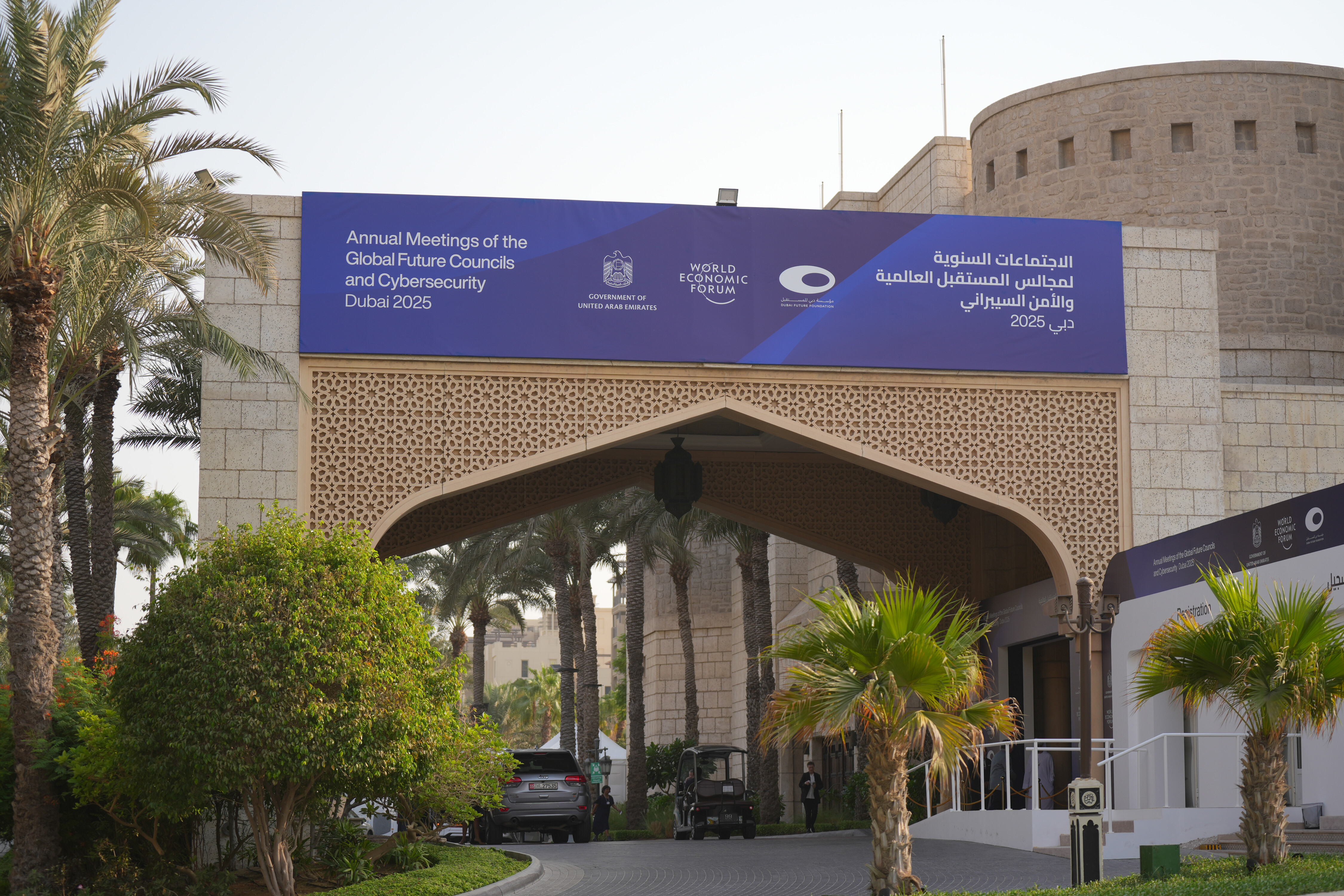Hackers are causing blackouts. It's time to boost our cyber resilience

Image: REUTERS/Danish Siddiqui
A six-hour winter blackout in mainland France could result in damages to households, businesses and vital institutions totalling over €1.5 billion. A well-orchestrated cyber attack on critical electricity infrastructure could have this type of economic impact on a country. Is this realistic? Officials from the US Department of Homeland Security publicly declared in 2018 that hackers had infiltrated the control rooms of multiple US electricity utilities to the extent that they had the ability to disrupt the flow of electricity to customers.
As the co-chairs of the World Economic Forum’s Systems of Cyber Resilience: Electricity public-private working group for the past year, we have dedicated time to discussing how to mitigate the risk of cyber attacks affecting critical electricity infrastructure and defining the best approach to cyber resilience in the increasingly complex electricity ecosystem.
Over the past 10 years, the electricity sector has experienced significant cyber attacks – the map below provides a non-exhaustive snapshot. In 2010, the Stuxnet computer virus caused significant damage to Iran’s nuclear power centrifuges which were manipulated to spin out of control. In 2014, a team of hackers cancelled approximately $650,000 of electricity bills due to be paid to a Turkish energy company. In 2015, control systems at three Ukrainian energy companies were compromised leaving 225,000 customers in the dark. Again in 2016, ‘Crash Override’ malware cause a second cyber-related blackout in Ukraine.

Our sector has many years of experience in protecting critical infrastructures from environmental events and physical attacks and in building resilient networks. Now we need to enhance these protocols, implementing new practices and strategies to address the new digital risks. Especially with the increasing number of new technologies and agents entering the ecosystem that, if compromised, could have a cascading effect over the entire electricity system.
Despite multiple electricity specific initiatives to share cyber information, as shown in the figure below, real-time cross-border information sharing at machine speed, and collective situational awareness is still a long way off. While the continuous evolution of technology will help through increasing maturity of security analytics, machine learning, artificial intelligence and even quantum computing, many challenges still exist.

The electricity sector has always been heavily interconnected with interdependencies across the supply chain, not to mention with other critical infrastructure industries, such as telecommunications, ports and sewage facilities. This interconnectivity is increasing. As the US Secretary of Homeland Security, Kirstjen Nielsen, said: “Hyperconnectivity means that your risk is now my risk and that an attack on the ‘weakest link’ can have consequences affecting us all.” In today’s environment, businesses need to not only secure their “house” but also cooperate along the entire supply chain to ensure that the whole “neighbourhood” is secured.
Given that our sector is one of the most heavily regulated, it is a constant challenge to navigate the regulatory landscape – particularly for multinational organisations who need to comply with slightly different regulations in every market.
Nonetheless, it is crucial to acknowledge that “compliant” does not equal “secure” for our businesses. True cyber resilience is more a matter of strategy and culture than tactics. Strategies which deal with cyber risks as systematically as other business risks and a culture where each employee feels personally responsible for the organisation’s resilience.
The result of our discussions is the recently published “Cyber Resilience in the Electricity Ecosystem” report detailing seven principles for boards of directors of businesses in the electricity sector. These high-level principles are specifically designed to support the advancement of ecosystem-wide cyber resilience in our sector.
Electricity is much more than just another technical system – it is the lifeblood of societies. To preserve the functioning of this vital system requires continuous improvements. Building on the 2018 momentum, our ambitions are growing. In 2019, as co-chairs, we plan to continue leading and working with this public-private group. Using the World Economic Forum’s unique neutral platform we aim to co-develop metrics to support leaders in monitoring the value of their cyber resilience efforts. In addition, we aim to provide recommendations to policymakers on a common global approach to cyber resilience policies, and we aim to enhance collaboration along the electricity supply chain by agreeing on roles and responsibilities between the different stakeholders when it comes to cyber resilience. Is this realistic? Look us up in 12 months.
The authors have been co-chairs of the World Economic Forum’s ‘Systems of Cyber Resilience: Electricity’ working group since May 2018. This working group, consisting of the World Economic Forum’s electricity industry partners and senior leaders in the public and private sectors, in conjunction with Boston Consulting Group, recently published the report, Cyber Resilience in the Electricity Ecosystem: Principles and Guidance for Boards.
Don't miss any update on this topic
Create a free account and access your personalized content collection with our latest publications and analyses.
License and Republishing
World Economic Forum articles may be republished in accordance with the Creative Commons Attribution-NonCommercial-NoDerivatives 4.0 International Public License, and in accordance with our Terms of Use.
The views expressed in this article are those of the author alone and not the World Economic Forum.
Stay up to date:
Infrastructure
Related topics:
Forum Stories newsletter
Bringing you weekly curated insights and analysis on the global issues that matter.
More on CybersecuritySee all
Julie Iskow and Kim Huffman
November 11, 2025






